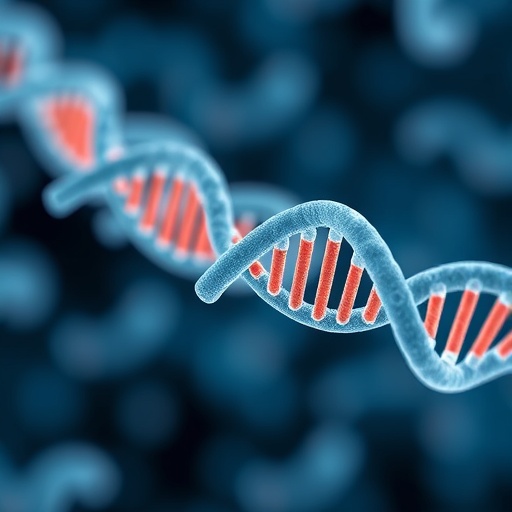In an exciting advancement for the field of genetic engineering, researchers at McGill University and McGill University Health Center have unveiled a novel method known as P3a site-specific and cassette mutagenesis, which promises to revolutionize the precision and speed of DNA editing. Detailed in the latest issue of Genes & Cancer, this innovative approach achieves near-perfect efficiency in introducing precise genetic modifications, marking a significant leap beyond conventional site-directed mutagenesis techniques.
Traditional mutagenesis methods have long been hampered by inefficiencies, lengthy protocols, and substantial error rates, especially when tasked with manipulating larger DNA molecules. The newly developed P3a method addresses these challenges by leveraging highly specific primer designs coupled with state-of-the-art high-fidelity DNA polymerases, namely Q5 and SuperFi II. These enzymes dramatically improve the accuracy and success rate of DNA edits, reducing the time and resources researchers must invest.
Central to P3a mutagenesis is the utilization of primer pairs engineered with 3′-overhangs. This unique structural feature facilitates seamless integration of genetic alterations, from single-nucleotide changes to substantial insertions or deletions. The design strategy capitalizes on the enhanced fidelity and processivity of the chosen polymerases, ensuring that even long and complex DNA segments—up to 13.4 kilobases—can be modified seamlessly.
P3a’s versatility extends to a broad array of genetic applications. Researchers successfully demonstrated precise editing of key biomedical targets, including oncogenes pivotal in cancer progression, variants implicated in neurodevelopmental disorders, and evolving spike protein sequences found in recent SARS-CoV-2 strains. Such capabilities underscore this method’s potential in both fundamental research and clinical innovation, enabling rapid exploration of mutation impacts and therapeutic candidate refinement.
One of the most striking advantages of the P3a method lies in its operational simplicity and rapid turnaround. Conventional approaches often demand multi-step cloning or labor-intensive verification, but with P3a mutagenesis, correct edits can be achieved within days using minimal laboratory inputs. This streamlining of workflow is poised to accelerate research cycles, from hypothesis generation to functional validation.
In addition to speed and accuracy, the P3a approach shines in its scalability. The method effectively manages DNA fragments of varying sizes while maintaining high mutation incorporation rates. Moreover, the introduction of Ultramer oligonucleotide primers capable of inserting sequences up to 0.36 kilobases further extends the method’s utility, enabling researchers to engineer complex constructs and synthetic genes with unprecedented ease.
This development holds particular promise in the dynamic landscape of synthetic biology and AI-assisted protein design. By allowing the seamless introduction of AI-generated mutations or entirely novel protein sequences, P3a mutagenesis supports cutting-edge endeavors aimed at engineering proteins with enhanced or novel functionalities. Such applications could redefine therapeutic protein production, vaccine design, and biomolecular tool development.
The method’s impact also resonates strongly in pandemic preparedness and response strategies. The capacity to efficiently engineer viral variants, including those associated with COVID-19, offers a powerful platform for studying virus-host interactions, testing antiviral compounds, and evaluating vaccine efficacy against emerging strains. This adaptability makes P3a an invaluable asset for global health research.
Moreover, P3a mutagenesis facilitates refined manipulation of genome editing tools themselves, such as CRISPR-Cas9 systems. Through seamless incorporation of specific mutations or regulatory elements, this technology enables the creation of tailored gene editing components with improved specificity and reduced off-target effects—addressing a crucial challenge in the therapeutic application of genome editing.
The reliability and accessibility of the P3a method are equally noteworthy. By employing commercially available high-fidelity polymerases and straightforward primer design strategies, the technique democratizes high-precision mutagenesis, eliminating the need for specialized equipment or complex protocols. This broad accessibility is expected to drive widespread adoption across academic and industrial laboratories worldwide.
Developed under the leadership of Dr. Xiang-Jiao Yang, this method also underscores the evolving synergy between traditional molecular biology and modern technologies. By integrating advanced enzymology with innovative primer chemistry, P3a mutagenesis epitomizes the kind of interdisciplinary innovation crucial for pushing the boundaries of genetic manipulation.
Ultimately, the introduction of P3a site-specific and cassette mutagenesis represents a paradigm shift in genetic engineering workflows. It empowers scientists to interrogate gene function, disease mechanisms, and protein interactions with unprecedented precision and efficiency. These capabilities are set to fuel discoveries and innovations across molecular genetics, synthetic biology, and biomedicine, profoundly impacting both research and therapeutic development.
Given the increasing complexity of biological questions and the need for rapid, precise gene editing solutions, methods like P3a mutagenesis are timely and transformative. As researchers continue to explore and refine this platform, it is poised to become a cornerstone technique in the toolbox of modern life sciences.
For the scientific community, this breakthrough heralds a new era of seamless genetic engineering, where speed, accuracy, and versatility converge to unlock novel insights into biology and medicine. The future of personalized therapies, synthetic bioengineering, and infectious disease research is brighter with the advent of P3a mutagenesis.
Subject of Research:
Article Title: P3a site-specific and cassette mutagenesis for seamless protein, RNA and plasmid engineering
News Publication Date: October 31, 2025
Web References: http://dx.doi.org/10.18632/genesandcancer.243
Image Credits: Copyright: © 2025 Yang. This is an open access article distributed under the terms of the Creative Commons Attribution License (CC BY 4.0), which permits unrestricted use, distribution, and reproduction in any medium, provided the original author and source are credited.
Keywords: cancer; germline mutation; somatic mutation; neurodevelopmental disorder; epigenetic regulator; AI-assisted protein design




